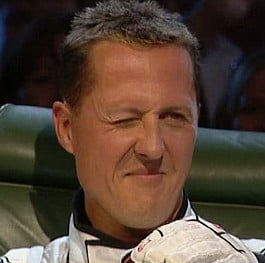Good thing we have modern people to undo all their hard work
One time, I met a tribal warrior from an indigenous Amazon rainforest tribe. He was the son of the tribe’s chief, actually.
To illustrate the form of tribal wrestling that his and the other tribes compete in, and at which he was some sort of master, he unexpectedly put me into a headlock and threw me to the floor of my office.
Oh a Susato takedown!.
North America was covered in curated forest as well.
Smallpox and genocide put an end to that…
A similar story could be said about Australia. It used to be lush and green because the indigenous people there had worked with the land to help make it that way. That all turned to the famous red desert outback after it was colonized. All the ancient knowledge of the land was destroyed and all that work had come undone.
Wrong - the red desert outback has always been there, for thousands of years. The colonists only arrived in the late 1700’s, and didnt even reach and explore the outback until the early 1800’s, let alone have any impact on it
I said ‘could’ because written history of Australia wasn’t really a thing before Europeans arrived and starting documenting their findings. At least as far as I understand.
However I watched this video which talks about aboriginal land management and references European perspectives of Australia when they first arrived. It seems it was often described as a “gentleman’s park” or “a landlord’s estate.” This video also provides quite a few sources.
This paper talks about indigenous land management and how it was disrupted after the arrival of the British. However it’s main focus is in Tasmania and not the main land but still shows the destructive nature of the British newcomers.
To me it seems like a lot of this greener Australia perspective comes from a book called The Biggest Estate on Earth: How Aborigines Made Australia which is referenced in the video I linked. This article briefly talks about the book and gives a little insight to aboriginal land management, European knowledge and their misconceptions.
In the end, I’m just some person on the internet and could be wrong about anything. I am basing my knowledge off my experiences and youtube videos. I did have the opportunity to live in Australia for two years and was able to speak with aboriginals and aboriginal supporters while living there. That alone gave me a new and meaningful perspective of the indigenous people of Canada, there place where I call home.
On a personal level, I believe over the course of relatively recent history that indigenous culture, history and knowledge has been irreplaceably destroyed by those who sought power and ownership. I wouldn’t consider this unique to Europe and it’s history with colonization. However, I can’t speak more confidently about the treatment of indigenous people and their land from other parts of the world such as Russia, Asia (broadly speaking), or Africa for example, as I haven’t come across much of that material.
So, the sunny side of this article is that humankind can change tree covering to the better. If we want to, it’s possible. Let’s go out and plant a tree.



